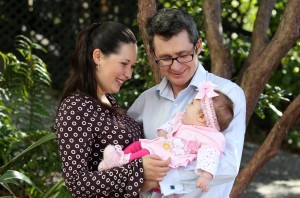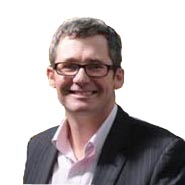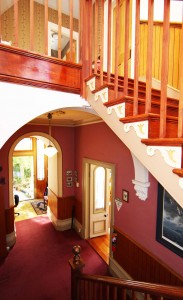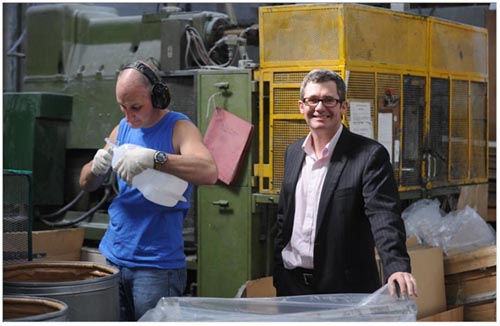I sleep for 6 – 8 hours per day, so a little less than average. Like most people I’d like to enjoy more of the awake life. Polyphasic sleep offers the possibility of achieving this. Essentially, it is taking more naps during a 24 hour period. I first became aware of this technique after reading Timothy Ferriss’ book The 4-Hour Body. As an aside, I like to say I have no financial or personal interest in any of Tim’s work or products, but I would certainly recommend his two books, the other being the Four Hour Work Week.
I’m not too sure how I’m going to go about this, but this is what this log is all about, to help lead you down a path that others can follow, you might even meet me coming back saying dead end ahead. Who knows, so read on.
In the Four Hour Body Tim outlines a number of methods, the chapter in part is written by Dustin Curtis, the following diagram appears in both the book and also in Dustin’s blog http://www.dustincurtis.com/sleep.html
It would be good to dive right in and go for the Uberman 2 hours sleep per day scenario. While this is the goal we will start at the 4 hour Everyman 3 nap stage and then progress from there.
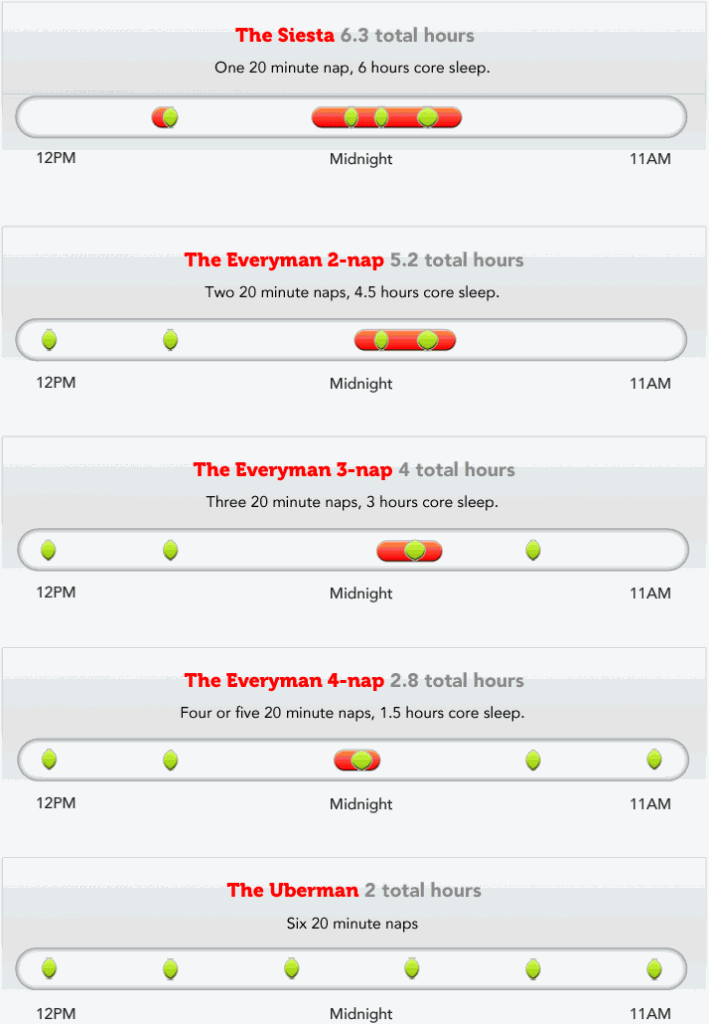
First Few Days
The most difficult part I found in the first days of the programme was that I didn’t want to nap. I didn’t feel sleepy at these times. This makes it exceedingly difficult for all other things to fall into place. However, it is important to get into the habit of laying down at these times, relaxing, shutting your eyes and counting the sheep so to speak. Many people who find it difficult to go sleep in the first place will find it 4 x more difficult because you are trying to fall asleep 4 x a day (on my adopted Everyman 3 Nap – 4 hours sleep per day).
The regime is broken up like this for me. Go to bed at 1 am, sleep 3 hours, get up at 4am. Nap at 8am, Nap at about 12noon, Nap at 5pm. I’ve chosen these times as it works around my working lifestyle. The Nap at 5pm has proven difficult to get going – possibly my body doesn’t have a history of sleeping at this time ever. The mid day nap, is an early version of the afternoon “nana nap”.
The most difficult of all is the 4am wake up. Sure you can wake up, but heck. Getting up and starting to “live” is almost impossible at the moment. Mostly a motivational issue.
Consequences so far: I’m a bit more dozy and “out of it” at different times of the day than usual, but my total exhaustion if you can call it that, or exhaustion bubbling to the surface is no more than usual. This is a real surprise I’ve been on the 4 (and to be honest) sometimes 6 hours sleep pattern for a week now, and feel fine. It is just that I feel a bit sleepy in the mornings at say 11 am, this is odd for me. However, afternoons are more productive after the nap. Haven’t noticed much in the evenings, go out like a light at 1am, sleep solidly.
So the hurdle now is the 4am – 8am shift. AND!! of course I have 4 hours of extra time in my day, and to be truthful it is actually 6 hours as no one is up to disturb me after 11pm. Wow, to have this time to myself when I can concentrate and not be diverted by other peoples objectives. Wow again.
Over 1 Week In
From time to time things come up, or more correctly, you forget that you have a different sleep/wake cycle to other people, and things get booked in to periods that you should be napping. When you are in a long meeting, it is difficult to say, “don’t mind me I’m going off to have a nap” people just don’t get it. So you skip it, and boy do you pay the price. Exhaustion, then over-tired and hence possibly even effecting the next nap. The other thing I’ve found, is getting up after 3 or 4 hours of solid sleep is hard. I don’t mind it after 7 -8 hours, 7am in the morning, sun is up, breakfast is calling… rise and shine. But 3 or 4 am in the morning after 3 hours sleep, 2nd or 3rd day in… hard work, so easy to just fall back to sleep. The motivation to get up is near impossible. First thing I’d say, get something really cool to do, a favorite job, task, book to read, quality time, not some drudge.
Also, I’m going to change the Everyman 3 Nap regime to possibly suit me better. I’d recommend some experimenting to get what fits you the best. So I’m now going to sleep at 4am, sleep 3 hours, get up at 7am like normal, suns up, birds are chirping, breakfast is calling, phone is a ringing… rise and shine like normal. Have a nap at noon (lunch time, so no disturbances), nap 5pm, just after work, stay behind, ear muffs on… I could make some suggestions for you – in your car in the car park, on the train on the way home etc (another good natural time for a nap), then 10pm, when your body is thinking nap time anyway, often people fall asleep watching TV. Then wake up and another blast of 5 hours of conscious life when other people would normally be comatose. The new experimental sleep pattern can be illustrated as below -
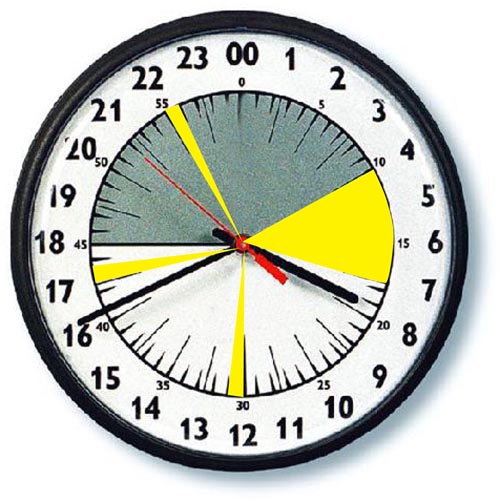
The above 24 hour clock indicates when I’m napping and having extended sleep. 00 is midnight 13 is 1pm, 18 is 6m, 23 is 11pm, 24 is midnight, 1 – 12 is 1am to 12 noon. Total 4 hours per day.
 Norman Wood in the Slavyansk area of the Ukraine.
Norman Wood in the Slavyansk area of the Ukraine.
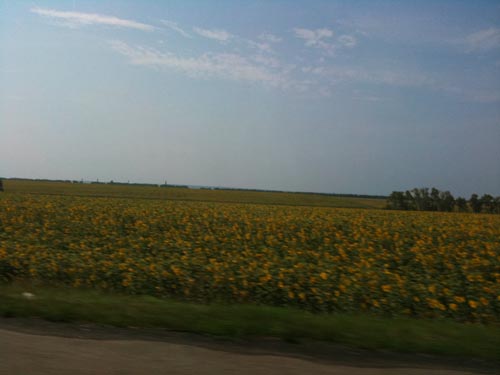 You can see the Ukrainian flag everywhere.
You can see the Ukrainian flag everywhere.
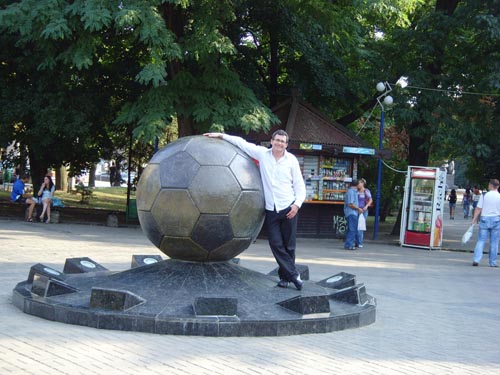 Happy Days in Kharkiv.
Happy Days in Kharkiv.




